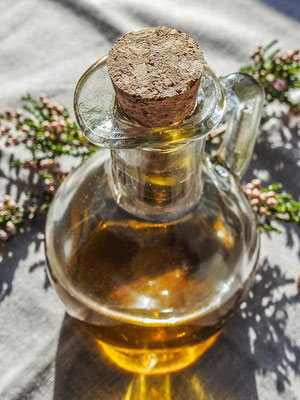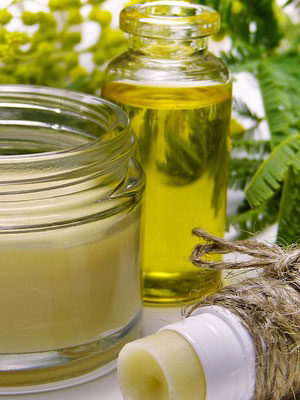Nothing Found
GrainProTrade – Pellets wholesale at producer prices
Our company GrainProTrade supplies pellets directly from the farmers at favorable conditions. You can safely buy pellets from us without worrying about the quality, as all of our products are consciously selected by our QM staff in Central Asia and thus meet the highest standards, which guarantees the expected quality of the goods. Besides the high standard, the products are sold at an affordable wholesale price. The conditions for the sale of pellets can be specified at any time in writing or by telephone with the manager. Our team delivers ordered pellets to our customers within 5 working days.
The main advantages of the ZusaWorking with our company:
- the high level of professionalism of our entire team, which ensures a hassle-free delivery of quality pellets in the shortest possible time;
- an appropriate price level, since we work directly with producers, e.gusamen work;
- convenient delivery straight to you.
Contact our managers on the website or by phone. We offer high quality pellets at an optimal price!

Vegetable Oil

almond oil

Vegetable oils

Vegetable oils

Olive oil
All about pellets
Pellets are a granular type of solid fuel in a cylindrical shape made from compressed waste from agricultural production of the wood processing industry. The main materials used in the manufacture of fuel pellets are:
– sawdust, chips, bark, humps of coniferous and deciduous species (the best option);
- peat;
– sunflower husk (the most common solution), rapeseed (the best option), straw of various cereals, corn, husks, cakes and much more;
– charcoal;
– household waste.
The basic binder is a substance of plant origin - lignin, a natural polymer that is found in almost every plant and can be plasticized during granulation under the influence of a sufficiently high operating temperature.
Pellets contain less moisture than dry firewood, are denser and take up less space. They are easy to transport, unload, store and, thanks to their standard size and uniform density, allow full automation of the heating process. When burned, pellets generate more heat than firewood and form significantly less ash. In addition, pellets are made from raw materials that used to rot in the forest and burned in landfills. Now it's an economical one Biofuel, which allows you to heat rooms and get hot water in a convenient way. Automated pellet boilers or pellet fireplaces are used for pellet heating. All you have to do is fill the hopper with pellets and select the desired temperature on the controller, the rest is done by the automation.
The main regulatory document for the production of pellets is the European Union standard EN 14961-2, adopted in January 2011 and issued on the basis of the EN Plus international quality certificate. There are three classes of granular fuels:
– ENplus-A1 – best premium quality, diameter up to 8,00 mm, ash content up to 0,70%, other name “white granules”;
– ENplus-A2 – with an ash content of up to 1,50%, also called industrial granules, they can consist of mixed types of wood;
– EN-B is in standard quality, with an ash content of up to 3,00%, an alternative name for agropellets.
Among the costs are the most expensive ENplus-A1 class pellets, the cheapest EN-B class, it is better not to take unconventional fuel.-
The crushing of the product to small sizes: up to 25 mm long and 2 to 4 mm in diameter. This process simplifies the work of the press granulator. It is necessary that the sawdust was as small as possible. The quality directly depends on it. The material is crushed with a crusher. The process can be repeated repeatedly.
The sawdust goes into the mixer and then into the drying drum. Drying of sawdust is a very important step because the percentage of moisture in the pellets should not be less than 8% and more than 12%. Deviations from the Gorenje norm lead to poor bonding of components and deterioration in the quality of combustion in the boiler. It is important to dry the sawdust to a certain percentage of moisture. The spent fractions enter the pellet boiler during the separation of sawdust and air.
Crushing the raw material into the state of flour. It is then sent to cyclones that separate the wood from the air. The flour is transported via conveyor belts into the hopper of the production granulator and from there into the mixer. The mixer adjusts the desired moisture content with water and steam.
Separation into pellets in an industrial granulator. At a temperature (250-300 degrees above 0) and through the chosen matrix, the raw material is transformed into pellets of the right size. Cut with a sharp knife.
Pellet cooling by a special fan and packing
Pellets are fuel pellets made from production waste. In Europe, they have been used for a long time and have convinced consumers of their good calorific value, comparable to coal, and environmental friendliness. To date, in our country this is a new type of fuel that can become an equivalent substitute for coal, diesel and classic firewood. Gas heating is cheaper, but if you take into account the costs of creating the project, tuning and gas supply, wood pellets are cheaper here too.
Pellets are produced with a length of 5 to 40 mm and a diameter of 6 to 8 mm. They are dense and drown in the water. The calorific value is 1,5 times higher compared to firewood. Compressed pellets are convenient to transport, compact to store when stored. The processing of all types of raw materials in the manufacture of pellets is about the same. First, each raw material is ground into flour. This flour is sent to a granulator that outputs the finished pellets while at the same time drying at high temperature and pressing the pellets. The finished products are cooled, packed in bags or bags. In this form, it can be stored for a long time or transported without fear. Sometimes pellets and lots are transported.
types of pellets You can make pellets from any raw material that contains legnin. In Russia, the raw materials for them are coniferous. The product from deciduous trees (oak, birch) is better in quality, but requires tougher equipment. Both wood and wood chips, sawdust and bark go into production. The quality of the pellets depends on the Zusacomposition of the raw material. If they have a lot of bark, which is usually contaminated with sand, the quality of such purely woody pellets will be inferior. It is possible to press pellets from a mixture of wood waste, but it is only possible from sawdust or wood.
In treeless agricultural regions, agropellets are made from agricultural waste. In Ukraine, straw is successfully used to make pellets. Although the thermal properties of straw pellets are lower than those of wood waste, its production is still profitable, since there are many raw materials and it is relatively cheap. pellets from the shell also solve the problem of waste disposal in the fields is solved immediately. A good find was rapeseed straw as a raw material for pellets, as it is whole inside and not hollow like other grains. It is inexpensive to press into pellets from it, as it is even more high-calorie compared to other species. The ash from straw pellets also exceeds the ash from wood pellets.
Efficient production of pellets from sunflower waste. The sunflower seed shell is the cheapest raw material for production near plantations and sunflower oil incinerators. In terms of calorific value, they are comparable to lignite briquettes. But the ash of sunflower pellets is only 1% while the lignite has 7%. Therefore, pellets from the shell are used in industry to fire up high-capacity boilers. Ash pellets from the shell are more good than evil: environmentally friendly, it is an excellent fertilizer in agriculture.
You can also use reeds for granulation. Pellets from reeds are no worse than gorenje from straw: they have good heat dissipation, do not give off a bad smell when burning, their production is not particularly expensive. They are very good for stove heating or the fireplace. But a boiler room for 30 houses will also successfully generate heat by working on reed pellets.
Peat pellet peat pellets are another good type biological fuel. Only natural binders are used in their manufacture, just like in the manufacture of pellets. The raw material is milled peat, pre-dried to 14-16% moisture. This technology was developed in Europe as early as 1947 and has remained essentially unchanged since then. Nowadays, peat pellets are particularly popular in Scandinavia, where even large power plants are working on them. The caloric content, economy, environmental friendliness and waste of peat pellets contribute to their spread in Russia, the USA and Western Europe.
Peat pellets are mainly used in industry due to their high ash content. But they are also used as an amplifier for the action of mineral fertilizers, as a raw material for the production of activated carbon, as an absorbent in industrial filters and as a material for storing vegetables and fruits. Peat pellets are also used to collect refinery waste spills from the ground or from the water surface to make thermal insulating materials.
In the vicinity of large poultry complexes, pellets are often made from bird droppings. They are little used as fuel, but it is an excellent fertilizer for farmers. The thrown granules contain a large amount of nutrients for plants, do not contain larvae eggs or other harmful microflora, have an unlimited shelf life, are soft, do not heat up and do not give spontaneous combustion. They can be incorporated into the ground in a mechanized manner.
Next to the pellets are pellets made from waste paper and cardboard. Paper and cardboard have a high energy value, you can realize this potential thanks to the low cost and high efficiency of burning pellets from them. The technology for producing pellets from waste paper differs from the previous ones due to the properties of the raw material. It does not need to be dried - on the contrary, moisture is required. The press granulator then processes it into pellets. This requires more cost than granulating other types of raw materials.
When using pellets, several problems of the national economy are solved at once. We always have a refillable supply of ecological fuel, process all types of production waste and receive a significant amount of ash as fertilizer.




